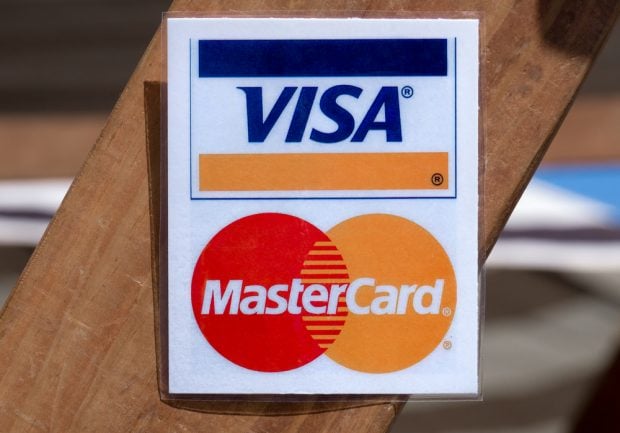In an era where technology upends business models overnight, thenever-ending quest to foresee opportunity has put the credit unionindustry on a vigilant watch over mobile person-to-person payments, which is the technology thatallows people to transfer funds from their accounts or credit cardsto another individual's account via a smartphone app.
|The increasing consumer acceptance of online banking, mobilebanking and e-commerce have paved the way for big growth in mobileP2P payments. The market will be worth about $4 billion by 2017,according to the “U.S. Mobile Payments Forecast 2013 to 2017report” from Forrester Research.
|That's why the people trying to stay ahead of the mobile P2Pspace, such as Amanda Smith, emerging products manager at paymentsprocessor CO-OPFinancial Services in Rancho Cucamonga, Calif., have a lot ontheir plate.
|“P2P is definitely one of those things that we think is going toget some more lift,” Smith explained. “It's something that thecredit unions should be more engaged in than they have beentraditionally.”
|CU Times spoke with several experts about where mobileP2P is headed and what credit unions can do to stay ahead of thecurve. Here are five things they said are on the horizon.
|Bigger Bucks
|Since it first hit the scene in the late 1990s, P2P has largelybeen all about moving small amounts of money around.
|“A lot of people said this is for splitting the dinner check orpaying the babysitter,” Steve Shaw, vice president of strategicmarketing for digital channels and e-payments at Fiserv, said.
|The Brookfield, Wis.-based company operates the P2P platformPopMoney, which is used at about 2,300 financial institutions.But PopMoney's transaction sizes have been increasing and thatmeans credit unions will need to reposition their mobile P2Pofferings in ways that reminds members that the service is for morethan just settling up at lunch, Shaw said. Members now use it foran increasing array of things, including paying rent, splittingshared expenses among roommates and sending money to collegestudents, he added.
|“We thought it'd be 20 bucks here or 30 bucks here; we're seeing$400 here, $500 here, $800 here going through the system today,”Shaw noticed.
|Fee Packaging
|Credit unions are very busy finding ways to integrate existingmobile P2P platforms with their existing credit unionplatforms.
|“Building your own P2P service, you'd have to try to interfacewith all these different institutions to ride the rails to dodebits and credits,” Shaw said.
|But that means credit unions have to pay for P2P, typically on aper-transaction basis, and those costs are hard to pass on toconsumers who are tired of being nickeled and dimed by financialinstitutions. Strategic fee structures are now crucial for creditunions investing in P2P.
|“Some of them use it as a tool and a resource, charge nothingfor it, and use it to try to grab attention in the marketplace,”Joe Woods, vice president of sales and relationship management atpoint-of-sale network CU24 in Tallahassee, Fla., said.
|Credit unions that don't have monthly checking account fees tendto charge per transaction. “$1 is pretty average for our solutionright now,” Woods said.
|A larger, more strategic realignment of credit union offeringsmay be warranted, too, according to Rob Rubin, managing director of advisory firm Novantas in NewYork.
|“You sort of organize maybe the products more around lifestylesor life stages,” he explained. “The account that's organized forstudents includes mobile P2P and includes all of those sort ofdigital capabilities and that definitely doesn't include paperstatements, and that definitely doesn't include free checks.”
|Rubin added, “Maybe the checking account to the senior persondoesn't include access to 50,000 ATMs, because they don't needthem. That costs money, too. So, maybe there's sort of arationalization around organizing products to be moreneeds-based.”
|Life in Real-Time
|Those lifestyle needs are also why speed will also be anincreasingly influential factor for credit unions in the mobile P2P space. Many platforms settle transactions within twoor three business days, but the next wave is all about real-timesettlement, according to some experts. And, that presents arevenue-generation opportunity for credit unions that place apremium on speed.
|For instance, more than 90% of the transactions on CU24'sPocket2Pocket platform, which rolled out in February 2014 andis used by nearly 60 credit unions, are real-time transactions,according to Woods.
|“That's one of our competitive advantages over the likes ofPopMoney, PayPal, some of the other ones out there. Most of thoseare primarily ACH at this point,” he said.
|“You'll see an uptick because of the real-time component,” Smithsaid. “Right now, offering that service to their customers is acost to [credit unions]. Some credit unions charge their membersfor the service or charge for next-day payments. So, something inreal-time, there might be an opportunity there to get someinterchange income, but noninterest income, fee income.”
|“I don't see it being a real money maker,” she cautioned. Thereal gains, she said, will be from giving members another way tointeract with their accounts.
|Midlife Crisis
|Though about 15% to 16% of consumers under age 40 said they usemobile P2P, that number fell to 11.1% for those 40 to 49 and just6.8% for those 50 and older, according to “Research Brief: BankShopper Snapshot Survey Vol. 10: Mobile Payments Tracker II,” 2014report from the Filene Research Institute.
|Credit unions must now decide whether they should focus onmarketing to millennials, who seem to be a natural fit for P2P, orfocus on engaging the over-40 crowd, which is bigger and has moremoney.
|“Credit unions actually serve older demographics,” Kim Cromer, CU24 vice president of project management, said.“We want to help the credit unions get the younger membership. Thisis a great tool to help with that.”
|“Go young,” Rubin advised. “Mobile P2P works when you haveroommates. Mobile P2P works when you're going out to dinner with abunch of friends. I think the lifestyle that we're talking aboutassociates with a younger generation.”
|Sending mom money via mobile P2P, Rubin said, “She wouldn't knowwhat to do with it.”
|Shaw said he sees the future of P2P a little differently.
|“Yes, there are young kids that are sending money off, butthere's also parents that are sending money to their kids off atcollege or family gifts,” he noted.
|Smith agreed that mobile P2P is not just for millennial creditunion members.
|“Oddly enough, my experience personally is that I think it's notalways the hardest thing to get those that are over 35 to adopt thetechnology,” Smith added. “You know, the very first person thatstarted texting me was my dad,” she chuckled.
|The Technology Connection
|The growth in mobile P2P may be the tipping point that turnstechnology, rather than people, into the primary draw for somemembers. That, in turn, means a radical change in the valueproposition for credit unions.
|Many credit unions, Rubin explained, “Want to talk about comingin and 'we're so nice and friendly, and we're going to help you setyourself up.' But what that does over time is the person thinksthat this credit union is really good while I'm here, but they'restill associating because of the people connection. They'reassociating the institution itself with the physical location ofwhere they are.”
|If the member moves, Rubin said, it's usually goodbye.
|“You don't want them to close the account when they graduate;they don't need to,” he continued. “A real marketing effort to ayounger generation not as much about the branch-oriented servicesor the people services but rather the mobile capabilities, so thatwhen they move or grow up, they don't think that they need toreplace.”
|Though only 12% of online consumers said they used mobile P2P inthe last 30 days, according to that Filene mobile payments survey,the experts all agreed that mobile P2P is moving at light speed andis only going to demand more space.
|“The pace is just amazing to me,” Smith said. “Just when I thinkit's gone as fast as it can possibly go, it just keeps going.”
Complete your profile to continue reading and get FREE access to CUTimes.com, part of your ALM digital membership.
Your access to unlimited CUTimes.com content isn’t changing.
Once you are an ALM digital member, you’ll receive:
- Critical CUTimes.com information including comprehensive product and service provider listings via the Marketplace Directory, CU Careers, resources from industry leaders, webcasts, and breaking news, analysis and more with our informative Newsletters.
- Exclusive discounts on ALM and CU Times events.
- Access to other award-winning ALM websites including Law.com and GlobeSt.com.
Already have an account? Sign In
© 2024 ALM Global, LLC, All Rights Reserved. Request academic re-use from www.copyright.com. All other uses, submit a request to [email protected]. For more information visit Asset & Logo Licensing.









